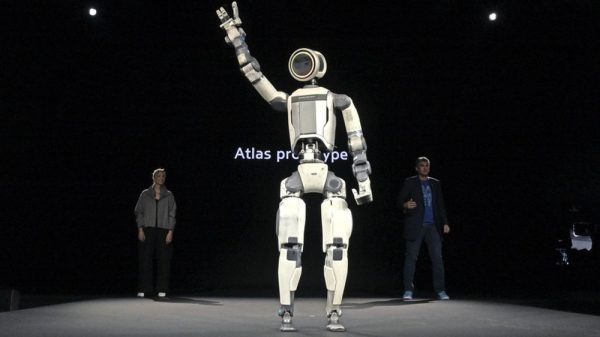But this is not certain
Who among us, hearing the barking or meowing of our beloved pet, did not want to find out what exactly he was saying? Since ancient times, the ability to talk to animals has been considered a unique magical gift — it is no coincidence that this motif is widely used in myths, fairy tales and world-famous fantasy. Scientists promise that soon ordinary people will surpass Harry Potter, who understood the magical language of snakes Parseltongue, and with the help of artificial intelligence they will learn to communicate not only with snakes, but with all living creatures.

Dogs bark, cats meow, bees buzz, wolves howl, birds whistle… Representatives of the animal world use a variety of signals to communicate, attempts to decipher which until recently were based solely on painstaking observation. People correlated the sounds made by animals with a specific situation, trying to guess the hidden meaning in them. Over the years of research, they managed to make several very interesting discoveries that made it possible to learn more about our little brothers. It became clear that prairie dogs designate humans and coyotes differently, a bee, with the help of special movements, tells its relatives where a flower suitable for pollination is located, dolphins come up with an individual distinctive whistle (some kind of name), which they use with pleasure throughout their lives, and bats «quarrel» over food. However, it is still impossible to say unequivocally that Barsik, meowing heart-rendingly near the bowl, is really asking for food, and is not criticizing, for example, the color of your pajama pants or the series on TV.
Scientists believe that the use of artificial intelligence will take communication with animals to a fundamentally different level. People no longer have to guess what they want to say or engage in training, teaching their pets new sounds and gestures. The researchers' goal is to create algorithms that will allow them to «talk» to animals using their own natural signals and receive feedback — the same as if the animals were interacting not with a machine, but with their relatives.
For this purpose, it is planned to use databases accumulated by various scientific groups. For many years now, they have been collected using microsensors attached to animals: often these devices record not only sounds (including in the ultrasonic range), but also facial expressions, and most importantly, the behavior associated with them. Some scientists specialize in the study of individual species — pigs, sperm whales or Hawaiian crows. Others, such as the California-based nonprofit Earth Species Project (ESP), set themselves more ambitious goals and hope to develop a universal algorithm that in the near future will allow humanity to “decipher” the languages of all animals and enter into full communication with them using a portable device that imitates signals understandable to representatives of fauna. “We do not focus on any specific species,” ESP explains, “The tools we develop can be useful to everyone, from cats to whales.”
According to the experimenters, the motivator was a study showing that machine learning can be successfully used to translate from different, including completely unrelated human languages, without any preconditions. Scientists believe that if neural networks are trained on an array of data obtained from sensors installed on animals, they will be able to build similar integral systems, but for translation from canine to human and vice versa. “We will create a synthetic whale or crow that speaks the language of the whale or crow so that they will not be able to understand that they are not talking to one of their own,” the researchers promise. A breakthrough in this area, according to ESP estimates, will occur within three years at most.
However, not all experts share such optimism. University of Pennsylvania professor Robert Seyfarth, a widely recognized animal psychology guru who has studied the social behavior and communication of primates for more than 40 years, believes that artificial intelligence will not live up to the expectations placed on it. On the one hand, animal communication does not reach human language. They use much fewer sounds than people, not to mention their stable combinations. One sound, the professor argues, can be used in animals to mean different things in different contexts, and only by thoroughly understanding where and with whom the interaction is taking place can one try to establish its meaning.
Seyfarth's remark confirms an observation by Russian scientists studying killer whales. These sea giants actively interact with each other by screaming and whistling. However, when scientists tried to scare away the killer whales using their own cry of danger, recorded on a tape recorder, they were not successful. The animals stubbornly refused to understand what they wanted from them, although previously the same signal, but only given by the leader, caused an unambiguous reaction from the pack. Perhaps their behavior was influenced not by sound, but by something else, elusive and incomprehensible to humans. And how, for example, to communicate with a worm, which, in principle, does not make any sounds, but can transmit information using secreted volatile substances. It is unlikely that artificial intelligence will cope with such a task.
An even more serious problem for meaningful communication is that the communication repertoire of animals appears to be very different from that of humans. If in nature cats do not talk to each other about their feelings, we will never be able to find out from Barsik how he feels today. Similarly, we can assume that things that are commonplace for animals may be completely alien to us, which means we won’t be able to talk about them either. As the philosopher Ludwig Wittgenstein argued: even if we learn the lion's language, this will not necessarily make his statements understandable to us.
However, the commercial prospects for the idea are good in any case. Deciphering even a small number of sounds made by the most popular pets — cats and dogs — promises fabulous profits. When the Japanese released the Meowlingual and Bowlingual devices, which translate meows and barks, in the early 2000s, they were snapped up like hotcakes, despite their unproven effectiveness. Now several companies are working on algorithms that will allow owners to use regular smartphones to communicate with their pets. Experts in the field of computer cryptography and developers of a program for detecting fakes in a prohibited social network became interested in the problem. This means that we will still hear from Barsik at least some human words..


























































Свежие комментарии